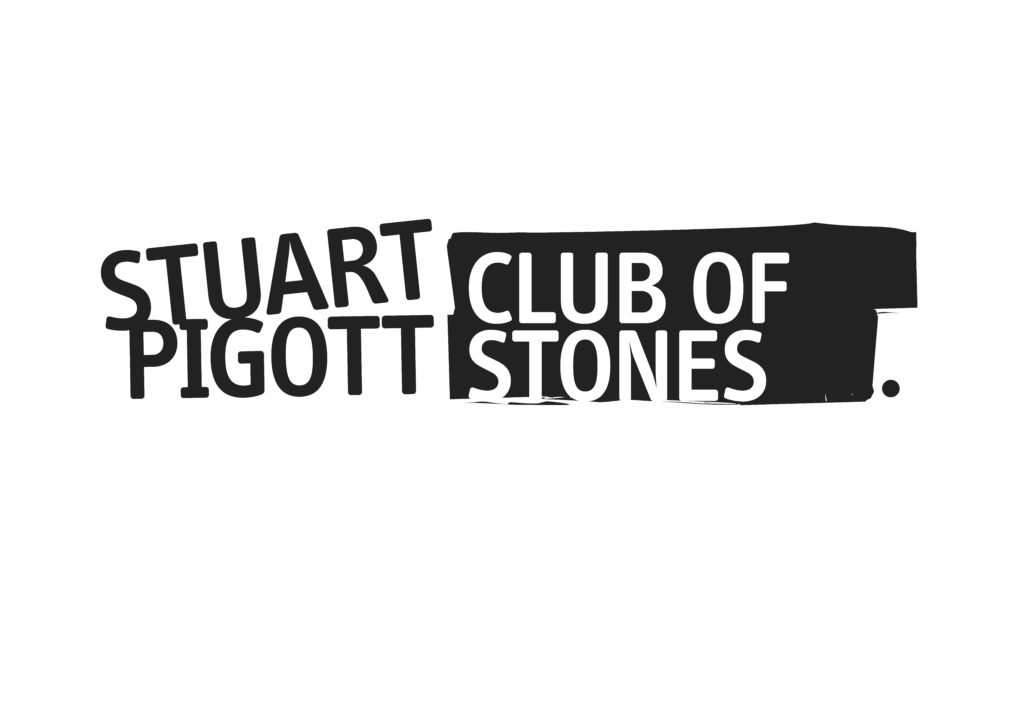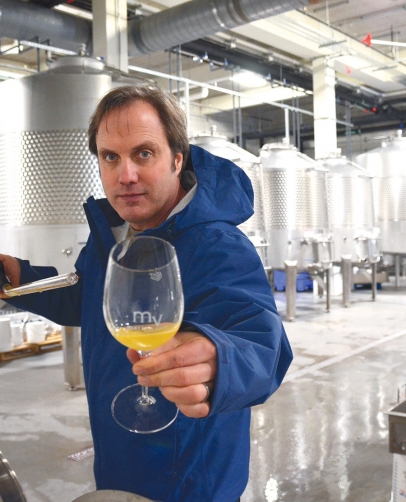
I’m not trying to become some kind of climate prophet, but my work for Club of Stones reporting on the wines from the stony places around Planet Wine keeps confronting me with shocking new evidence of the reality of climate change. I recently got another jolt when my friend Sean O’Keefe posted on Facebook a story about climate warming in the USA published by The Washington Post on 13th August, 2019. It included the map below where the intensity of red-brown color corresponds to the degree of warming One of the darkest spots (scroll down for a detailed view of the map) is centered on Sean’s home town of Traverse City/Michigan and Mari Vineyards on the Old Mission Peninsula (OMP) where he works as winemaker. Hence his very serious interest in what the map has to say.
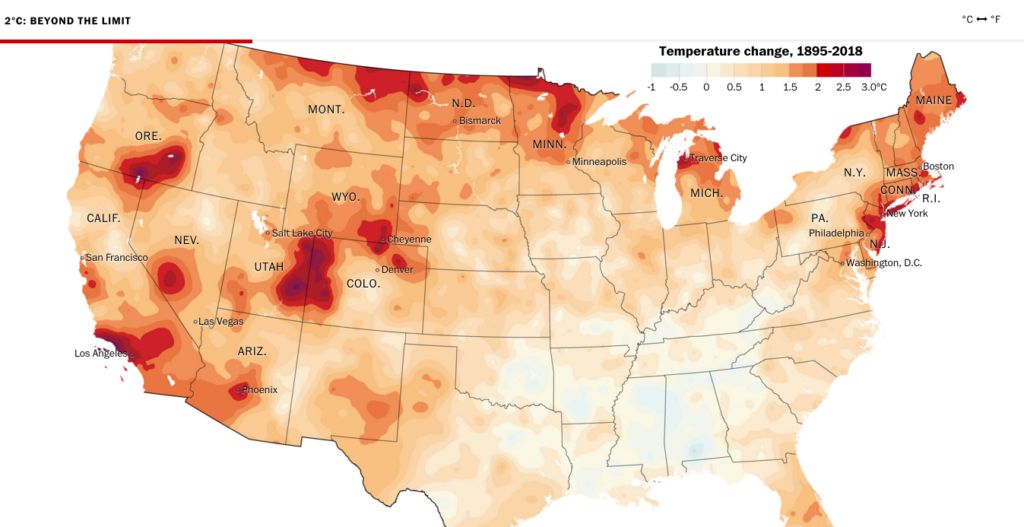
Since I first met Sean at a conference in Seattle in July 2000 I also have an interest in this beautiful and fascinating wine region. When I first travelled there in October 2005 it was sunny and the temperatures were balmy, but when I arrived for my second visit in December 2007 it looked like an icy wasteland. As Sean said to me then, “we are right at the climatic edge where sometimes, very late in the fall, miraculous things happen…and of course, sometimes we fall off the edge.” If you’re on the edge then even a small movement one way or another can make a huge difference.
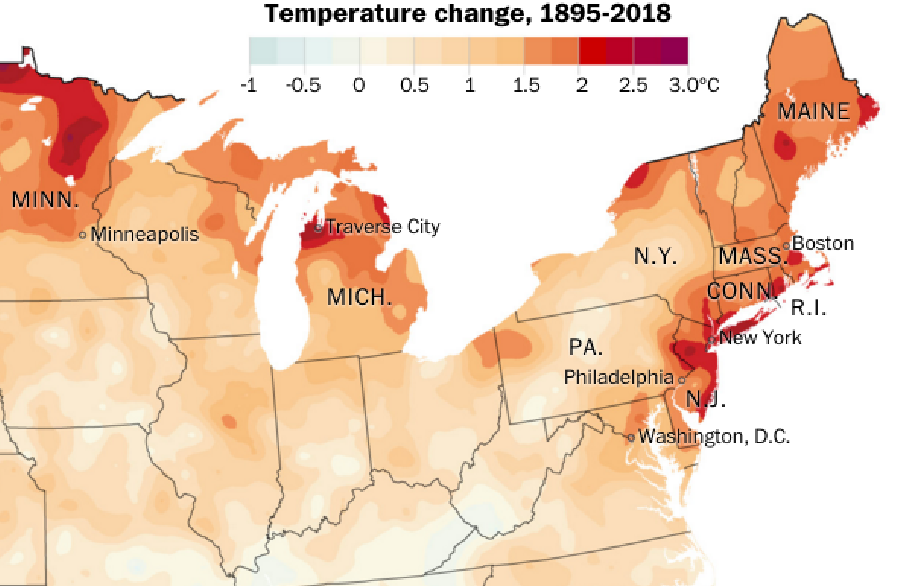
In the winter temperatures fall so low here that there’s a real danger of winter vine kill, but as long as the waters of Grand Traverse Bay, part of Lake Michigan, don’t freeze, the vineyards along the narrow OMP aren’t threatened with extinction. Additionally, the cold waters of the lake at the beginning of the year delay the arrival of spring, reducing the risk of frost damage to the young vine shoots. Then, the warm waters of the lake at the end of summer extend the fall, crucially assisting the ripening process. As Sean also likes to say, “we’re a very continental location, but, paradoxically, we’re also maritime.”
When Donald Trump and other Americans with the same perspective deny the reality of climate change they often point to scenes like that I encountered in late 2007, but the weather stats have no axe to grind and speak a very different language. The taste of the wines confirms the pattern of warming, their aromas and flavors having got progressively riper during the almost 20 years I’ve followed them. For example, today Mari vineyards makes a string of surprisingly powerful reds along with excellent dry Rieslings.
Some of you are no doubt wondering if you really need to pay attention to the wines of this region, that’s so little known compared with Napa Valley/California. However, the growth and increasing sophistication of tourism in the Traverse City area and the stunning Lake Michigan shoreline (think spectacular giant sand dunes) is introducing ever more Americans to them. On top of that, the hard work of Sean and colleagues like Lee Lutes of Black Star Farms and Brian Ulbrich of Left Foot Charley has made the international wine scene rather well aware of the rapid improvement in wine quality achieved there during the last decade.
These facts, no less than my friendships with Sean’s family and colleagues, were in my mind when I saw that dark spot on the climate change map of America at the breakfast table of my home close to Frankfurt/Germany. My heart missed a beat. Then my mind kicked in and I thought, “Oh shit!” because there’s no pause button for climate change, no cherry picking the positives and leaving out the negatives. The cherry metaphor fits well, because the area around Traverse City is also the Cherry Capital of America.
So, I asked Sean if he could organize me heat summations for his region, specifically Huglin Index figures. They measure the total amount of warmth during April to September when the vines are growing and the grapes ripening. Shortly afterwards I received a table of this data for four locations in Northern Michigan from Professor Jeffrey Andresen of Michigan State University and the state climatologist. The Huglin Index figures for the OMP only went back to 2001, but those for Traverse City started in 1900.
The 2001-2018 average Huglin Index figures for the OMP and Traverse City are 1641.57 and 1,725.935 respectively. However, if you decide to take inro account the influence of the Lake in pushing back the growing season and calculate the Huglin Index for the months of May to October), then you get significantly higher figures, 1,753,74 for the OMP and 1,823.33 for Traverse City. The former is easily enough to fully ripen Riesling, Chardonnay, Pinot Blanc, Pinot Gris and Pinot Noir, almost enough for Cabernet Franc. This gives a good idea of what kind of wines are currently successful here.
But for the sake of comparability with other regions let’s be classical and stick with the Huglin Index figures for April to September. They say that the climate of the area is roughly comparable to that of the Rheingau or Burgundy in the period 1961 – 1999 (scroll down to the first table in my penultimate blog posting for this comparison). In which years during the 20th century was the Huglin Index for Traverse City at least the current average figure, i.e. which were the warm years? They were:
1900
– – – –
1921, 1922, 1925
1930, 1933, 1934, 1937, 1938
1941, 1944
1955, 1959
1970, 1975, 1977
1987, 1988
1991, 1995, 1998, 1999
It’s striking how there are several duos of consecutive warm years, but no trios. Now let’s turn to the 21st century:
2005, 2006, 2007
2010, 2011, 2012, 2015, 2016, 2017, 2018
In less than 20 years there have already been two trios of consecutive warm vintages and one quartet of consecutive warm vintages! That is a very major change and it seems to acceleration of warming from 2010.
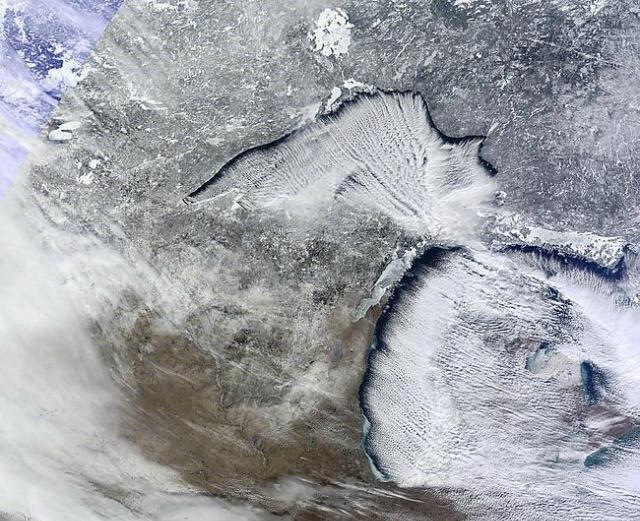
There’s a flip side to this pattern of warming though, which is the increasing frequency and duration of so-called Polar Vortices. The warming arctic seems to have resulted in a sluggish arctic jet stream that enables very cold air to push down through Canada and across Lakes Superior and Michigan into the USA during winter. “We can handle a couple of days of this and have so in the past, but several weeks of sub-zero (F) weather is deadly to grapevines, especially if the lakes freeze,” Sean explains. “That happened back during the winters of 2013/14 and 2014/2015. We just barely missed getting hit again last winter, though Southern Michigan and Ohio were not so lucky.”
Anyone who thinks that Northern Michigan is an unusually negative example of what climate change can do to a wine region, and that other region’s have it much better should think hard. For example, a glance at the map at the top of this story shows that Napa Valley only warmed a fraction as much as Traverse City and the OMP. However, back in early October 2017 it was hit by terrible fires that resulted in smoke tainted Cabernet Sauvignon grapes (the region’s most important and valuable crop) and a couple of wineries were burnt down. In next door Sonoma County entire residential districts were reduced to ash. Those fires were part of a pattern that’s undoubtedly connected to climate change.
How much more proof is needed for politicians to join us in uniting behind the science, rather than doing what the fossil fuel industry lobbies want, which is exactly nothing. We need action NOW!
